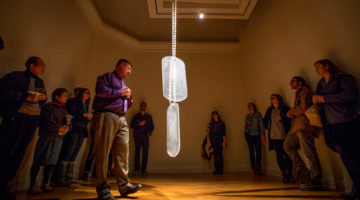
BECon 2017: Artist Story – Jeffrey Stenbom L147
In this BECon 2017 presentation, artist Jeffrey Stenbom outlines how his experiences as a combat soldier shape and motivate his work.

In this BECon 2017 presentation, artist Jeffrey Stenbom outlines how his experiences as a combat soldier shape and motivate his work.